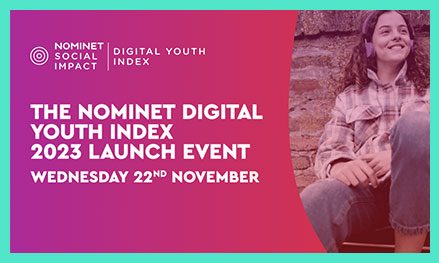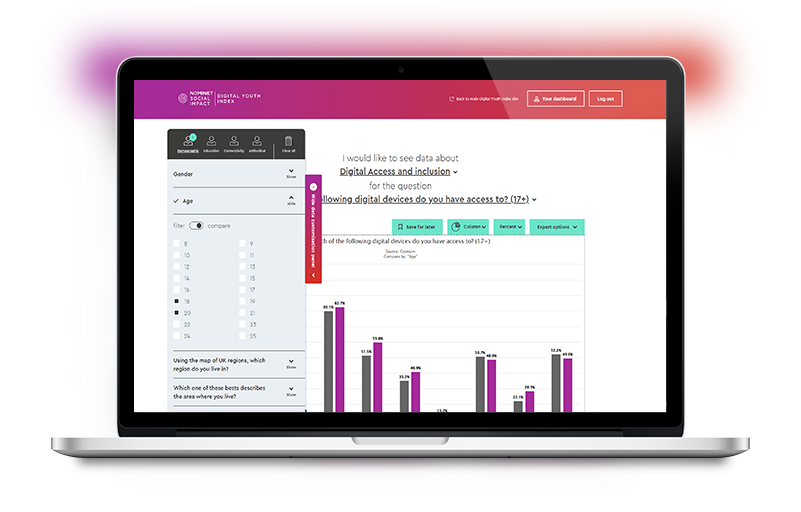14-year-old school student Kiren’s story focuses on her use of digital devices. We discover the ways in which she is utilising different devices and gain insight into the difficulties she sometimes faces, particularly as a result of the pandemic.
The data from the 2021 Digital Youth Index showed that nine in ten young people do not need help when using a computer for school, university, or work. Whilst in some cases, using a digital device may not be the issue, there are few who find it difficult to do some of the core tasks required for learning and working in today’s digital ecosystem because they cannot access the required devices.
Kiren does not fall into the 72% who find it easy to access a virtual classroom. Within Kiren’s household there is a single shared laptop, making remote schoolwork particularly difficult due to the lack of fit for purpose devices available.
Kiren’s parents are originally from India and mainly speak Punjabi when they are at home. Whilst both of her parents work part-time, doing multiple jobs, their overall household income is below average. She is currently living in a property that is rented from another family member with her older sister, younger brother, and her grandparents. She finds her living situation a little crowded, and often struggles to have quiet time and find a space where she can focus.
Although Kiren and her sister both have mobile phones, they are hand-me-downs from their parents who cannot afford the latest technology. Kiren and her sister sometimes become frustrated with their phones because they cannot use newer apps and the internet often runs slowly. This is classified as device poverty, and our findings show that Kiren is not the only one suffering – more than one in ten young people described having a poor-quality internet connection.
Heavy reliance on mobile data is common in lower income households, with 18% of students who receive free school meals relying exclusively on mobile data, and this became the situation for Kiren during the pandemic. Whilst she tried to attend some virtual lessons on Microsoft Teams using her second-hand smart phone, the screen was just too small, meaning she was not able to engage in lessons and therefore missed out on some areas of study. This was very frustrating for her and caused emotional distress as these lessons were not only a chance for her to engage in her online school activities, but also a way for her to connect with her friends.
Kiren’s story shows that even if young people have access to devices, they are not always fit for purpose in today’s digital ecosystem. It’s also shown that the use of a mobile phone is simply not enough when needing to partake in online learning with ample amounts of information, or to effectively complete homework when outside of school, and poor-quality internet is ineffective in a world where so much revolves around virtual interactions. These are fundamental building blocks which are so critical for young people to learn about potential careers in digital beyond, to develop their learning and opportunities for inspiration.
To delve deeper and gain further insight into more young people like Kiren, you can use our custom data visualisation tool to unearth the information needed to support new policies, inform campaigns and target those who need it the most. We are looking forward to sharing further findings to allow the informed conversations and momentum to continue.
Share this article







